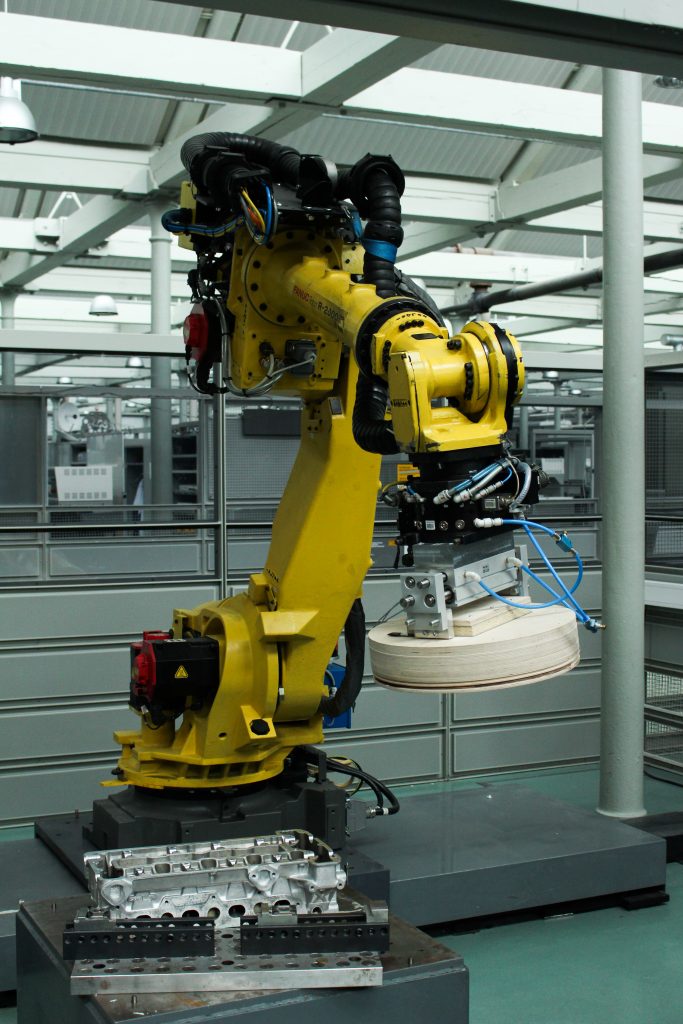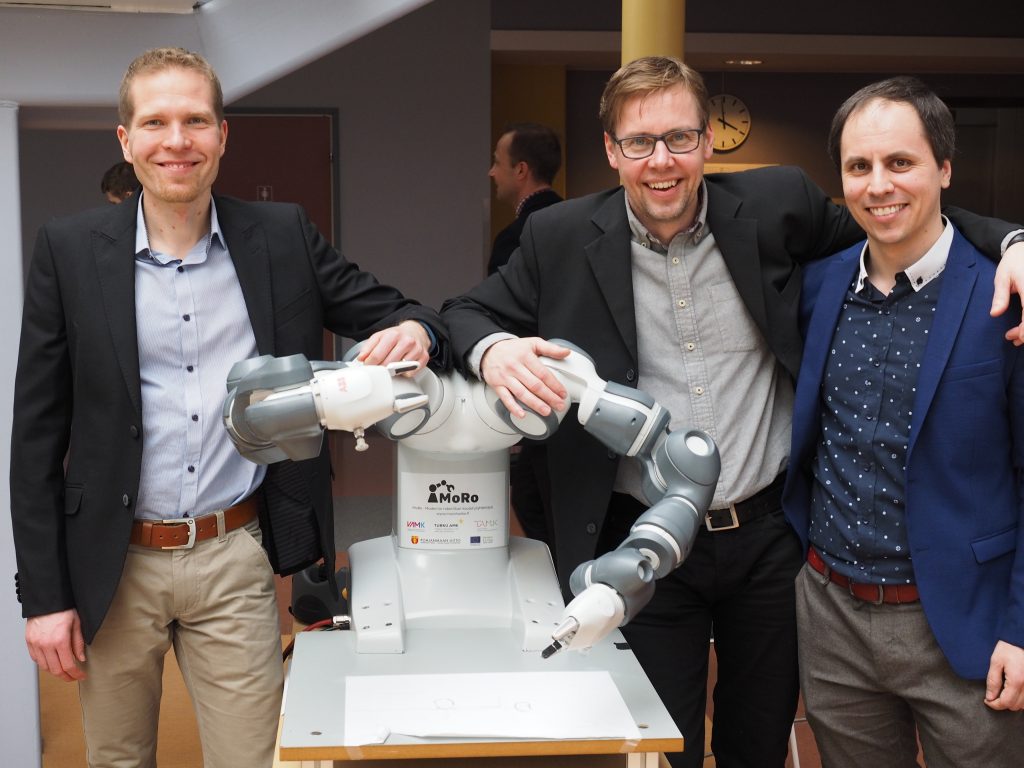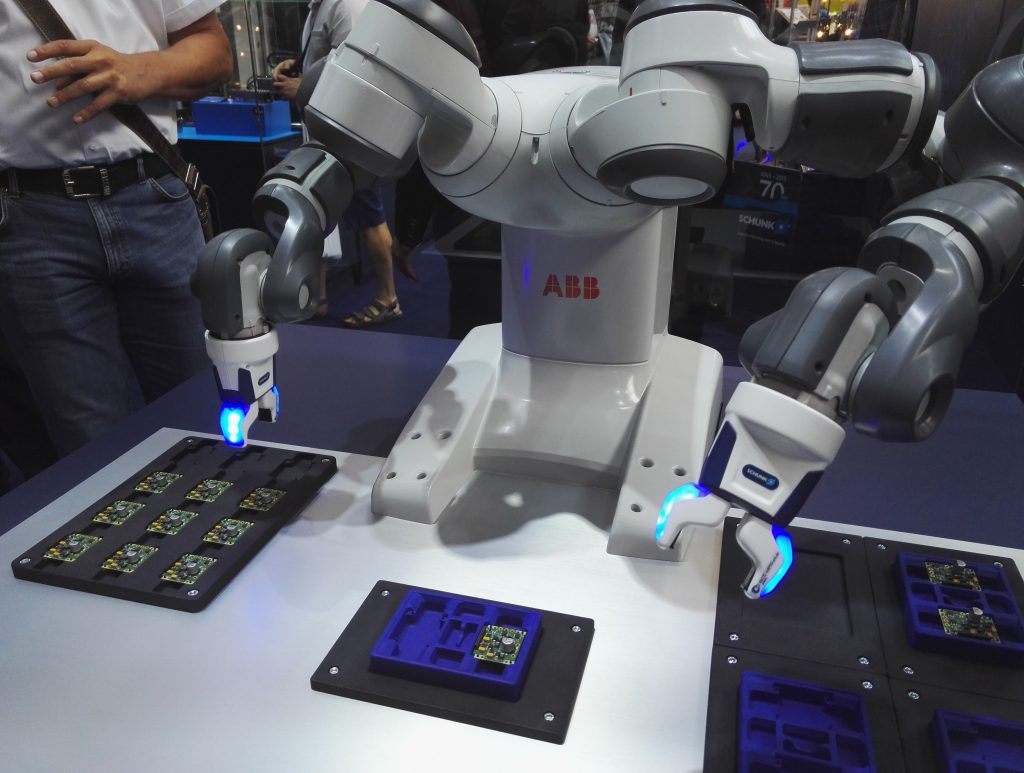Triforce of Robotics
Automation, robotics, and the industries surrounding them are in great demand nationally and internationally. The lack of skilled workers and experts is however becoming a great problem. To combat this, three universities of applied sciences have banded together, hailing from Vaasa, Turku, and Tampere.

The project called MoRo – Modern Industrial Robotics in Cooperational Education began when Mika Billing from the Vaasa University of Applied Sciences met up with his colleagues, Jere Siivonen from Tampere and Sakari Koivunen from Turku. The three men realized that they all shared the burning desire to work together on the field of robotics. Billing, working as a lecturer at the Vaasa University of Applied Sciences says that too often talks and conversations about cooperation are left on the drawing board, and one of the main objectives of the trio is to bring together their existing resources and, if necessary, to create new ones which would be open to all.
“We wanted to combine our strengths, and we were thinking about where we would get the time required to do it. This was the starting point of the project”, states Billing. The core of the project is made up from the creation of learning materials and making sure that they are open to all, but it is not enough to satisfy the three wise men. In addition to gathering and creating the materials, the triumvirate is also engaged in cooperation with various companies.

“We organize visits, simulation exercises, and seminars related to robotics and automation”, Billing says. The seminars organized in Turku and Vaasa have been attended by around two hundred participants, which Billing says is a testament to the fact that the project is needed and that it is vital. In addition to the events and activities, the trio of universities have procured a co-operational robot with the project-funds. The robot goes by the name YuMi, and it travels between the universities offering each of them the opportunity to use and utilize a highly sophisticated robot. This ensures that no single university would have invest heavily on acquiring such a robot. YuMi represents, according to Billing, a new generation of co-operational robots which can be used in the same environment as human personnel, something that was impossible when using the steel-caged older models.
From the very beginning Billing, Siivonen, and Koivunen have brought together students and companies working with robotics enabling the students to learn the tools and software used by the companies. In addition to bringing knowledge and enthusiasm to the students, this also ensures that they are gaining valuable experience. The philosophy of openness manifests in the teaching activities too, as the trio publishes all their teaching material online where anybody can read and learn from them. It is this kind of sharing of knowledge, the freedom of the information, that Billing thinks is vital.
Another person who shares the trio’s enthusiasm for the project is Jorma Tuominen who heads the technical faculty at the Vaasa University of Applied Sciences. He sees robotics to be a critical component for the society within the near-future, especially if that society vies to be successful in the global marketplace. In order to maintain the competitiveness and jobs, Tuominen emphasises the need to proliferate information and knowledge concerning automation and robotics in the different sectors of the society.
“Some may think that mere infrastructure is the key in surviving the future. But we must be able to handle, maintain, and use the robots better than any of the others”, he emphasises.
In order to have a supreme understanding and skills in the field of robotics, we have to go beyond the areas of mechanical and automation engineering, and to approach the field through the perspective of interdisciplinarity, reminds Billing.
“In the future, we are bringing the students of ICT and electrical engineering to the mix. Electric engineering, mechanical engineering, and automation engineering are all vital in the field of robotics. Soon, everybody will have access to the same hardware, so what will be the defining factor in succeeding or failing is the expertise”, he underlines.

Tuominen shares the same notions of interdisciplinarity, and according to him, the university of applied sciences is strengthening and deepening its cooperation with the University of Vaasa. In addition to this, the autumn of 2017 will see the further development of Roboacademy which will incorporate students of ICT and electrical engineering. The Roboacademy will be offering the students not only theoretical but also practical skills and knowledge which will enable them to answer the challenges brought forth by the working life.
“We have also thought about the concept of mentoring activities which would bring the students and the companies into an even closer cooperation, but first we need the companies to be more aware of the skill-gaps that they have”, Tuominen says.
One of the potential areas of growth and innovation in the field of robotics is achieved though the applications offered by virtual reality. The project has been seen its participants program robots in VR, and it has offered even more tools in bringing these two fields together. As an example of using VR within the framework of the project, Billing mentions the virtual rendering of an actual physical laboratory in the Vaasa University of Applied Sciences. This creates a new and innovative interface that has great advantages for the students and staff.
“Some may think that mere infrastructure is the key in surviving the future. But we must be able to handle, maintain, and use the robots better than any of the others.” – Jorma Tuominen
The idea of the project will be hopefully continued in the future with the working title of Moro2 which would concentrate more on the dissemination of information towards the companies, and to the training of their staff.
The other universities of applied sciences in the nation have also expressed their interests in utilizing the open teaching material and data, says Billing. These could be accessed through a portal that would be open to any and all who would be interested in the materials, he ponders. Billing encourages the other institutes of higher learning in taking advantage of the culture of openness and the synergy between them, as this would enable sharing the resources and the risks between a pair of broader shoulders. This, he thinks, is vital to a country such as Finland.
Of the future scenarios offered by robotics, Billing is interested in, for example, the idea of a three-day workweek which would free the people to pursue self-betterment. He is quick to remind us, however, that despite the hype surrounding robotics they are ultimately mere machines, and this latest boom in robotics is not the first of its kind. The key difference to the robotics booms of yesteryear is that the technology surrounding robotics has advanced in strides, enabling the robots to be used in more varied sectors where they can accomplish a multitude of tasks.